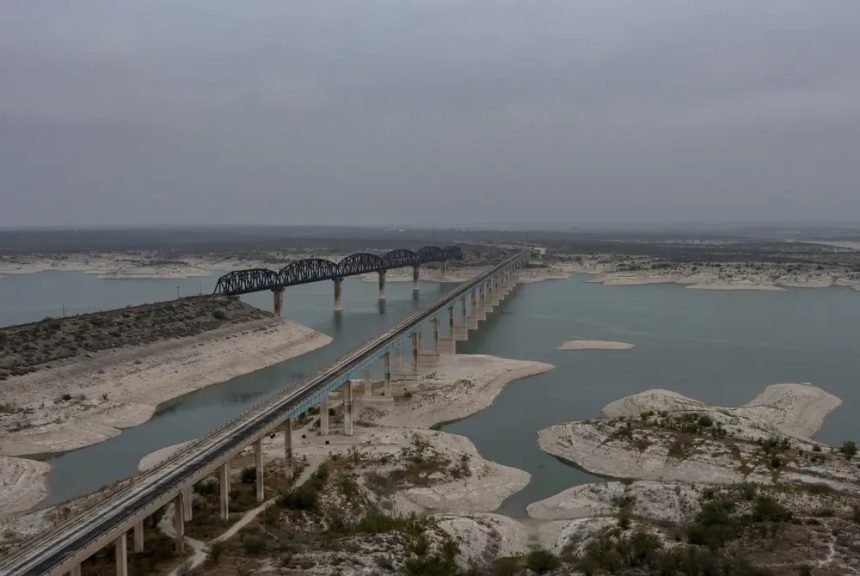New U.S.-Mexico Water Agreement Aims to Strengthen Rio Grande Water Sharing and Enhance Drought Resilience
In a significant step toward improving water cooperation, Mexico and the United States have reached an agreement designed to secure more consistent water deliveries from Mexico to the U.S. under the terms of the 1944 U.S.-Mexico water treaty.
This longstanding agreement, managed by the International Boundary and Water Commission (IBWC), establishes rules for the allocation of shared water resources along the border, with Mexico committed to providing the U.S. with 1.75 million acre-feet of water from the Rio Grande every five years. This water supply is critical for U.S. farmers and communities, particularly in times of severe drought.
After an extended period of tension and negotiations due to Mexico’s recent challenges in meeting its water obligations, both nations announced that the new measure would offer Mexico “tools and flexibility to deliver water earlier in the five-year cycle.” This flexibility is expected to reduce stress on Mexican water reserves during dry seasons while ensuring that the U.S. receives reliable water resources.
Over recent years, Mexico has faced significant difficulty in meeting its water delivery commitments as it has grappled with some of the most severe drought conditions in decades. The impact of climate change has exacerbated water scarcity in the region, complicating the delivery of the agreed-upon water resources and placing a strain on both sides of the border.

With these challenges in mind, the IBWC stated that the new agreement would provide “greater reliability and predictability in water allocations” for communities and farmers in both countries. The agreement aims to secure a sustainable flow of water for irrigation, helping alleviate uncertainty around water availability for U.S. agricultural operations that rely on water from the Rio Grande.
The new arrangement, which took over 18 months of discussions to finalize, includes several provisions aimed at bolstering water resource management.
READ ALSO: Nigeria’s President Tinubu to Urge Gaza Ceasefire at Upcoming Riyadh Summit
The agreement establishes cross-border working groups to explore and implement water conservation strategies that will benefit both Mexico and the United States. These groups will focus on shared goals, including sustainable resource usage, improved conservation efforts, and better management of water reserves.
Moreover, the agreement includes provisions to improve water quality within the Rio Grande basin. This added focus on quality is expected to benefit the ecosystems that rely on the river, ensuring that the water not only meets quantity requirements but also maintains standards that are essential for agricultural and environmental health.
Under the previous system, Mexico faced a rigid deadline to deliver the required water amounts over a five-year period, which created challenges during droughts or other water shortages. The new flexibility allows Mexico to allocate and deliver water earlier within each five-year cycle, easing pressure during drier years and helping both countries manage the resources more efficiently.
This flexibility is particularly valuable as it addresses the varying climate impacts that both countries face. The U.S. and Mexico now have additional tools to work collaboratively, ensuring water security even during extreme weather conditions.
For both Mexico and the U.S., the new measure is a critical step toward enhancing cross-border cooperation and creating a more sustainable framework for managing shared water resources. By jointly working to address water scarcity issues, the countries aim to create a foundation for long-term water security that will benefit not only agricultural sectors but also urban communities and ecosystems that depend on the Rio Grande.

In their respective statements, both governments emphasized that the agreement represents a commitment to stronger, more adaptable water-sharing practices.
READ ALSO: Qatar Withdraws as Leading Mediator in Gaza Ceasefire Negotiations
The collaboration between Mexico and the United States under this treaty is seen as a model for addressing transboundary water issues, especially in the face of increasing climate challenges. By prioritizing both conservation and reliability, this agreement exemplifies a proactive approach to addressing shared environmental concerns.
With this agreement in place, both nations can now move forward with a more resilient strategy for water management, ensuring that communities on both sides of the border continue to receive the water resources they need.
This cooperation highlights the importance of adaptive measures in response to climate variability and serves as a reminder of the need for shared solutions in managing precious resources across borders.

